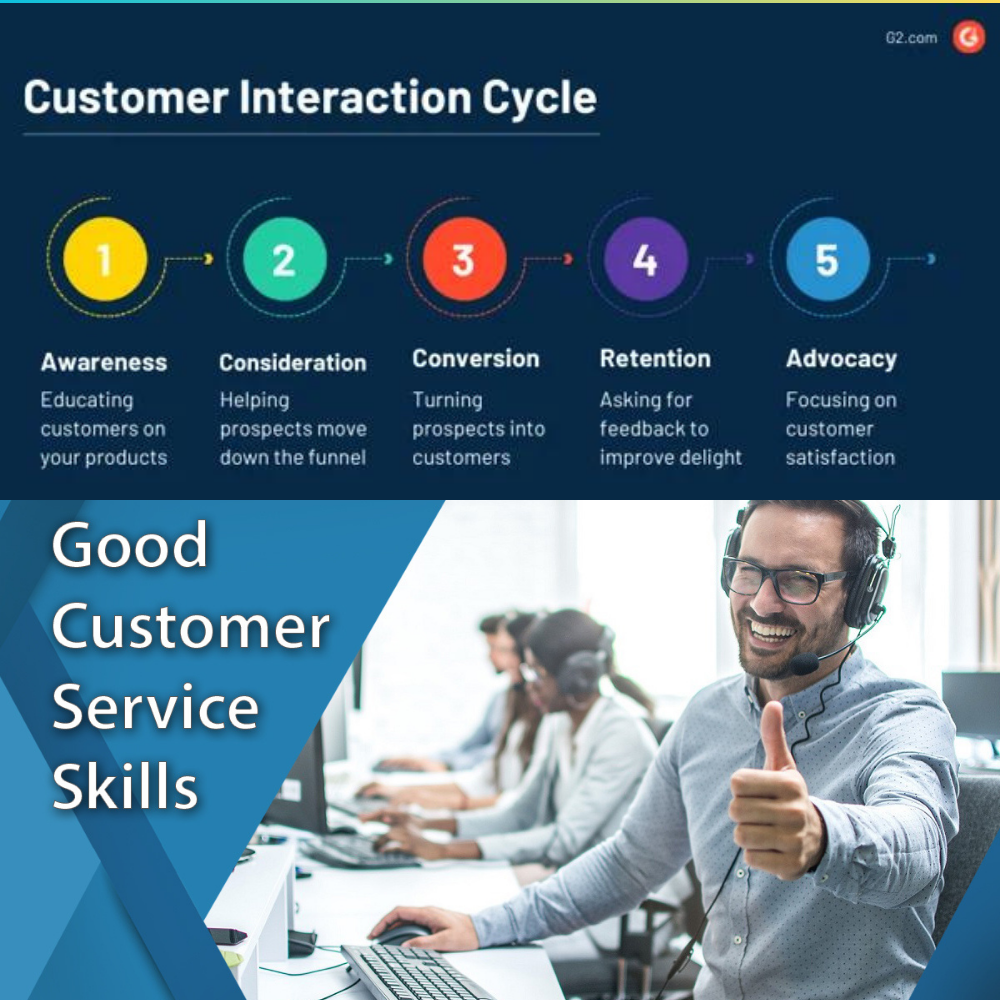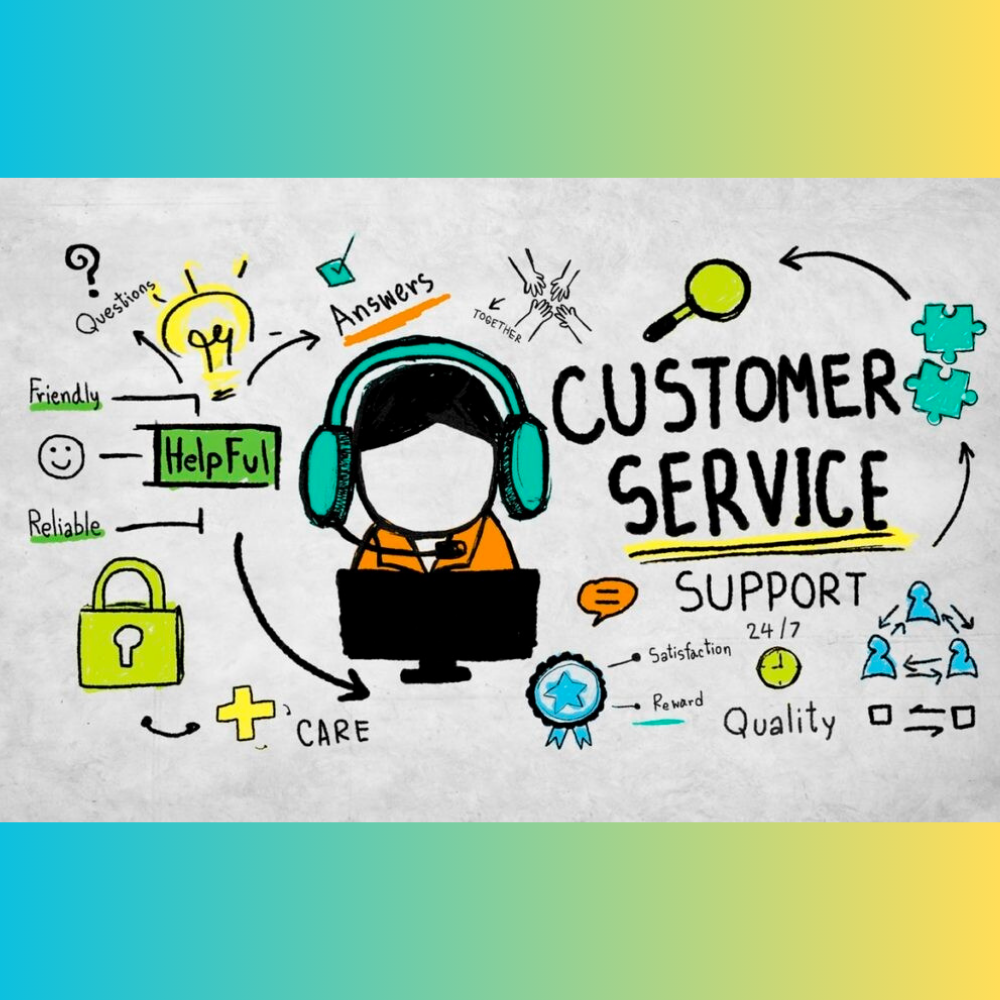Understanding Customer Interaction
In today's digital age, understanding and optimizing these interactions is crucial for building lasting relationships and driving growth.
Key Takeaways:
- Grasping the importance of empathy, personalization, and responsiveness in customer interactions.
- Learning how to improve customer relations to foster loyalty and satisfaction.
- Discovering the tools and technologies that can enhance the quality of customer interactions.

The Essence Of Customer Interaction
Customer interaction isn't just about solving problems or answering questions; it's about creating an experience. When customers feel heard and valued, they're more likely to develop a positive perception of your brand. Empathy plays a pivotal role here, as it allows your team to understand and share the feelings of your customers, leading to more meaningful and effective customer communication throughout.
Empathy In Action
Empathy is not just a buzzword; it's a business strategy. When your customer service representatives truly empathize with customers, they can tailor their responses to fit the individual's emotional state and needs. This could mean taking the time to listen to a customer's story without interruption or going the extra mile to resolve an issue that may not be covered by your company's standard policy.
Personalization: More Than A Name
Personalization is about recognizing your customer as an individual with unique preferences and history with your brand. It's about moving beyond addressing them by their name in emails. Personalization involves using customer data to provide tailored recommendations, remembering past interactions, and making the customer feel like they're having a one-on-one conversation with your brand.
Crafting Personalized Experiences
To craft a personalized experience, you need to collect and analyze data on your customers' behaviors, preferences, and feedback. This information can then be used to customize how customers interact with interactions, whether it's through targeted marketing campaigns, personalized product suggestions, or remembering a customer's last issue and asking for an update.
Responsiveness: The Speed Of Trust
Responsiveness is a key factor in building trust with your customers. It's not just about the speed of your reply, but also about the quality and relevance of your response. Customers expect quick and effective solutions to their inquiries, and meeting these expectations can significantly enhance their perception of your brand.
Streamlining Response Times
To improve responsiveness, consider implementing tools like chatbots for immediate replies and training your team to handle inquiries efficiently. Additionally, setting up a knowledge base can empower customers to find answers to common questions without having to wait for a response.
How to Improve Customer Relations
Improving the importance of customer interactions and relations is an ongoing process that requires attention to detail and a commitment to excellence. It starts with understanding your customers' needs and continues with consistent, high-quality interactions. Every touchpoint is an opportunity to strengthen the relationship.
Building Stronger Bonds
To build stronger bonds with your customers, ensure that every department and support team understands the importance of customer interaction. From sales to support, each team member should be equipped with the skills and knowledge to provide exceptional service. Regular training and a clear understanding of company values can help achieve this.
The Future Of Customer Interaction Tools
The landscape of customer interaction tools is constantly evolving, with new technologies reshaping the way businesses connect with their clientele. Artificial Intelligence (AI) and machine learning are at the forefront of this revolution, offering unprecedented insights into customer behavior and preferences. By leveraging AI-powered chatbots, companies can provide instant support and personalized recommendations, ensuring that customer needs are met swiftly and efficiently. These tools not only enhance the customer experience but also streamline operations, allowing businesses to allocate human resources to more complex tasks.
In addition to AI, augmented reality (AR) and virtual reality (VR) are beginning to make their mark in the realm of customer service. These immersive technologies can transport customers into virtual showrooms or provide interactive product demonstrations, creating a memorable and engaging experience. As these tools become more accessible, they will play a crucial role in bridging the gap between digital and physical customer interactions. By staying abreast of these technological advancements, businesses can anticipate customer needs and remain competitive in a rapidly changing market.
The Evolution Of Customer Service Channels

The landscape of customer service is constantly evolving, with tools and technologies to use becoming more sophisticated and integrated. Gone are the days when a simple phone call was the only way to reach a company. Now, customers expect to interact with businesses across a multitude of channels, including email, chat, social media, and even through virtual assistants. This shift has necessitated the development of advanced customer service platforms that can handle multiple types of interactions seamlessly. By adopting these platforms, businesses are not only meeting customer expectations but also streamlining their own processes, leading to increased efficiency and satisfaction on both ends positive customer interactions.
In the digital age, the integration of artificial intelligence (AI) into customer service channels is no longer a futuristic concept but a present-day reality. AI-powered chatbots, for instance, can handle a high volume of simple inquiries without human intervention, freeing up customer service representatives to tackle more complex issues. This synergy between human and machine is a prime example of how tools and technologies to use are revolutionizing the way businesses interact with their customers. As these technologies continue to advance, we can expect them to become even more intuitive, providing a customer service experience that is not only responsive but also anticipatory, catering to needs customers haven't even expressed yet.
The Impact Of Real-Time Analytics On Customer Interactions
Real-time analytics are transforming the way businesses understand and respond to their customers. With the right tools and technologies to use, companies can now track customer interactions as they happen, gaining immediate insights into customer behavior and sentiment. This allows for a more dynamic approach to customer service, where businesses can adjust their strategies on the fly to better meet customer needs. For example, if analytics reveal that new customers who are frequently asking the same question, a company can quickly create content to address this issue, thereby reducing the number of incoming queries and improving customer satisfaction.
Moreover, the power of real-time analytics extends beyond reactive measures. By analyzing trends and patterns, businesses can proactively identify opportunities for enhancing customer interactions. Whether it's personalizing customer interaction cycle through a marketing campaign or adjusting a product feature, the use of sophisticated analytics tools and technologies enables companies to stay one step ahead. This proactive stance not only delights customers but also fosters a sense of loyalty and trust, as customers feel understood and valued. As analytics tools continue to evolve, the potential for creating a truly customer-centric business model becomes increasingly attainable.
Integrating Omnichannel Strategies
Embracing an omnichannel approach is no longer optional for businesses that wish to thrive in today's digital ecosystem. Customers expect seamless interactions across various platforms, whether it's through social media, email, phone, or in-person. Integrating tools that synchronize data across all communication channels ensures that customer interactions are consistent and informed. For instance, a CRM system that updates customer information in real-time can empower customer service representatives to provide personalized and knowledgeable support, regardless of the communication medium.
Moreover, the use of analytics tools to track customer interactions across channels provides valuable insights into customer preferences and behavior. This data can be used to tailor marketing campaigns, improve product offerings, and optimize the overall customer journey. By adopting an omnichannel customer interaction strategy, and utilizing the right tools and technologies, businesses can create a cohesive and satisfying customer experience that fosters loyalty and drives growth. It's about meeting customers where they are and providing value every step of the way.
Tools And Technologies To Enhance Interactions

In the digital age, there are numerous tools and technologies available to help businesses improve their customer interactions. From CRM systems to AI-powered chatbots, these solutions can help streamline processes, provide valuable insights, and ensure that customers receive the attention they deserve.
Choosing The Right Tools
Selecting the right tools and technologies for your business depends on your specific needs and goals. Consider factors such as the size of your customer base, the channels they use to communicate with you, and the complexity of their inquiries. Investing in a robust CRM system, for example, can help you keep track of customer interactions and provide personalized service.
The Role Of Social Media
Social media has transformed the way businesses interact with customers. It's a platform for both marketing and for customer service interactions, allowing for real-time engagement and the ability to quickly address customer concerns or praise.
Leveraging Social Platforms
To leverage social platforms effectively, maintain an active presence where your customers are most likely to be. Use these channels to share valuable content, engage loyal customers in conversations, and provide support. Monitor your social media accounts regularly to ensure timely responses to customer inquiries.
Feedback: The Gateway To Improvement
Customer feedback is invaluable for understanding how your business is performing in terms of customer interaction. It provides direct insight into what you're doing well and where you can improve.
Utilizing Customer Feedback
Actively seek out and encourage feedback through surveys, reviews, and direct communication unhappy customers. Once you receive it, analyze the data and use it to make informed decisions about changes to your products, services, or customer interaction strategies.
Training For Excellence
Your team is the face of your company, and their ability to interact with customers effectively is crucial. Investing in regular training ensures that they have the necessary skills and knowledge to provide loyal customer base with outstanding service.
Continuous Learning And Development
Create a culture of continuous learning and development within your organization. Encourage your team to stay updated on best practices for customer interaction and provide opportunities for them to improve their skills through workshops, seminars, and online courses.
Summary
Understanding customer interaction is about recognizing the importance of empathy, personalization, and responsiveness. By improving customer relations and leveraging the right tools and technologies to manage customer interactions, businesses can create memorable experiences that lead to customer loyalty and satisfaction. Remember, every interaction is an opportunity to build a stronger relationship with your customers.
FAQ Section
Q: Why is empathy important in customer interactions? A: Empathy is crucial to customer retention because it helps your team connect with customers on a personal level, understand their concerns, and provide solutions that resonate with their emotional needs. It's the foundation for trust and a positive customer experience.
Q: How can personalization improve customer interaction? A: Personalization makes customers feel valued and understood. By using customer data to tailor interactions and recommendations, businesses can create a more engaging and relevant experience for each individual, which can lead to increased satisfaction and loyalty from loyal customer.
Q: What are some effective tools for enhancing customer interactions? A: CRM systems, AI-powered chatbots, and social media management tools are effective for enhancing customer interactions. They help businesses manage and analyze customer data, provide timely responses, and maintain an active and engaging presence existing customers on social media platforms.
Need a hand starting your business?
Check out these resources I recommend…
1. I am truly delighted to share that this internet business model is among the most thrilling I have ever come across… Click here.
2. I finally found a guy who taught me a new way to make money online that actually works…Click Here.
3. Transform your communication with this email solution that I trust and use myself… Click here.
4. The # 1 🤖 Bot builder AI agent, that simply does everything for you. You need to see this to believe it…. Click Here.
5. This is the company I use to build fantastic converting websites and sale funnels… Click Here.










